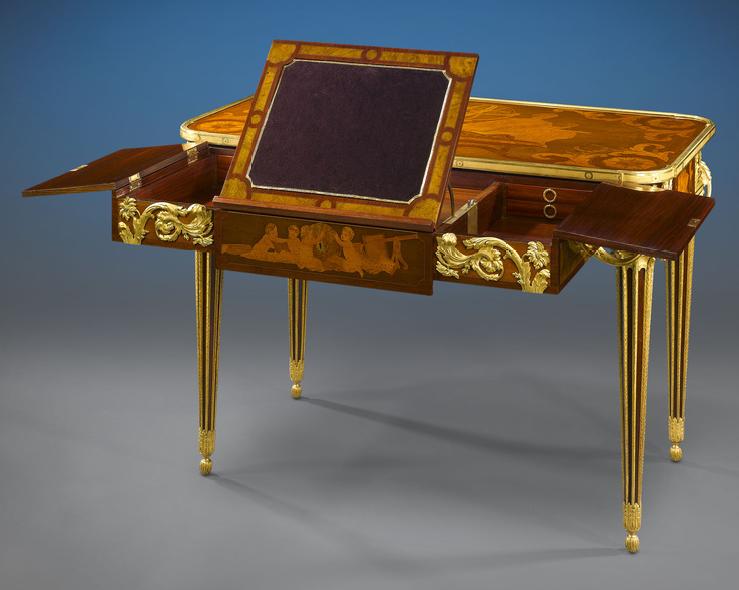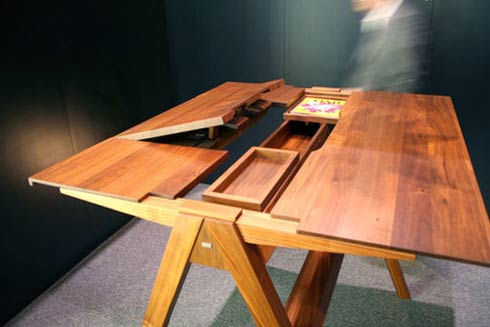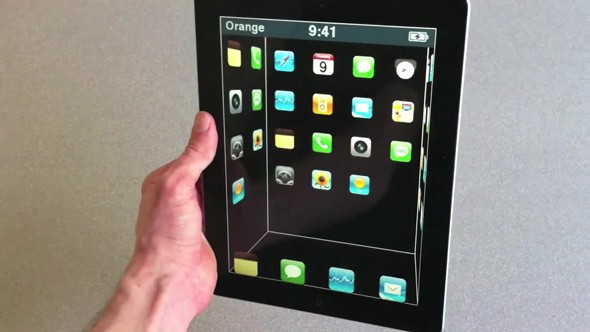
While reading about secretary desks, I came across a related type I had never heard of before, the mechanical desk. A fad of the 1700s, these desks featured mechanisms that hid shelves and surfaces when not in use. It’s a real shame that these didn’t make a comeback when computers became widespread. Computer desks were dreadful. While hiding a 21 inch CRT that weight 150 pounds wouldn’t have been easy, the idea hiding materials when they are not needed appeals to me.

A modern interpretation of the mechanical desk is the Crescendo C2 from Stilvoll. I like how it looks like a drafting table, but expands to reveal bins. Of course, the role these bins play could have been solved with a traditional divided drawer. Still, this got me thinking.
I’ve considered getting a desktop computer, yet I don’t know what I would do with it. At work I love my MacPro and its three 24 inch LCDs, and part of me would love to have that setup at home, even if I don’t do much coding at home. If I ever took to telecommuting regularly, I’d need such a setup, including the Steelcase Leap chair, as even a 17 inch laptop just doesn’t quite cut it. Assuming I had desktop computer with multiple displays, I wouldn’t like having the monitors dominating the desk space. Yes, LCDs have a much smaller footprint than CRTs, but they still are visually imposing. Sometimes that’s what you want, but sometimes it’s not. A mechanical desk that could retract the screens would be great. Even better, if the desktop could expand. Perhaps a second pullout spring loaded leaf, kind of the like the Crescendo C2, but with a pushdown panel that has the screens mounted on swivel arms. Fold up the monitors and push them down into a little protected area behind the desk. Hide the tower and assorted wires in pedestal, and put file drawers in the other pedestal. (Personally, I prefer desks with legs rather than pedestals, but such a desk would look weird with big solid front on it.)
This is something I’m going to need to draw out.
Continue reading →







